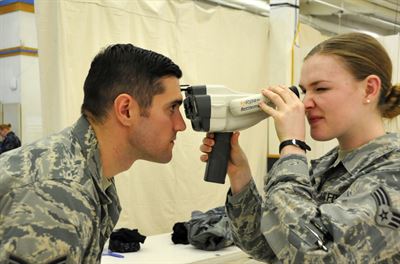NDAA pushes DoD health care toward more centralization
2019 Defense bill strengthens role of Defense Health Agency, but omits Senate language that would have completely eliminated the military services' own medical ...
The House and Senate’s final agreement on the 2019 Defense authorization bill does not go as far as abolishing the military services’ own medical commands, but it does push the Military Health System in the unmistakable direction of more centralization and less reliance on Army, Navy and Air Force-specific ways of delivering health care.
The legislation, which the House passed last week and the Senate is expected to adopt in the next few days, leaves the Army, Navy and Air Force’s respective health commands in place, but moves many of their responsibilities to the Defense Health Agency. It also gives the DHA director more authority over the operation of military treatment facilities and orders the agency to reorganize those hospitals and clinics into a new regional management structure.
“It continues to demonstrate Congress’ interest in being able to help move the MHS into a modernized health care system,” said Vice Adm. Raquel Bono, the current DHA director. “And I welcome the support and their interest in helping us move towards that integrated system of readiness and health that we’ve been working on for some time now.”
The bill sets up a new research and development organization within DHA, effectively moving the Army’s Medical Research and Materiel Command to the DHA director’s control. DoD could choose to migrate other service-specific medical research organizations to DHA, but it’s not explicitly required to do so.
Similarly, it moves the Army Public Health Command, the Navy-Marine Corps Public Health Command and Air Force public health programs in to a new DHA Public Health organization.
And although the Senate did not win over House colleagues with language that would have moved almost all of the rest of the military services’ medical functions to DHA, the bill leaves that possibility open, telling the Defense secretary to deliver a report next spring on the feasibility of setting up a new “Defense Health Command.”
DHA to take over 400+ service-run MTFs
In the meantime, the NDAA repeats an earlier edict that the Defense Health Agency take over the administration of the more than 400 MTFs currently run by the Army, Navy and Air Force. In its most recent progress report to Congress, DoD had requested a three-year “phased implementation” for that change, but after accusing DoD of dragging its feet, lawmakers set a new deadline of Sept. 30, 2020.
In that new administrative structure, Congress made clear that the DHA director would have absolute control of every Defense organization in the organizational chart between DHA headquarters and a military treatment facility, including the responsibility to issue performance ratings for the commanders of each hospital and clinic.
Those clinics, in turn, will be organized into three or four health “regions” — two in the continental U.S. and one or two overseas — each commanded by a one-star general or admiral.
The Senate had proposed a system of four regions in the U.S., but lawmakers acceded to DoD’s suggestion that it would make more sense to have the MTF regions aligned with the two East and West regions it uses for the contracts in its TRICARE managed care system.
“We recognize that with many of the functions that we do, particularly with health IT, there is great value to regionalizing our functions and our support,” Bono said. “It lets us scale much more quickly and be able to provide support in a broad way as we have these regionalized areas. How that final configuration will look is yet to be determined while we’re still waiting to see if this pending legislation actually does become a statute.”
Among the other new powers granted to the DHA director by the new NDAA:
- Determine the scope of medical care provided at each MTF to meet the military personnel readiness requirements of the senior military operational commander of the military installation
- Determine total workforce requirements at each MTF
- Direct joint manning at MTFs and intermediary organizations
- Establish training and skills sustainment venues for military medical personnel
- Address personnel staffing shortages at MTFs
- Approve service nominations for commanders or directors of MTFs
Senate NDAA aims to eliminate administrative overhead in MHS
Besides requiring even more centralization than what conferees agreed to in the final NDAA package, the Senate’s version of the bill accused DoD of stonewalling Congress’ previous orders to eliminate administrative overhead and layers of management in the Military Health System.
Latest Defense News
The final bill omits most of the Senate’s more-incendiary language.
But in a report to Congress last month, Defense officials signaled that they agreed with at least part of the Senate’s diagnosis of the MHS’ governance problems.
“Governance continues to be based on a broad set of councils, work groups, integrated product teams and other formally-chartered working groups as well as ad hoc working groups that often require unanimous support to advance initiatives and change. These governance bodies consume a significant amount of time and personnel resources. The result is often a sclerotic decision-making process that has the effect of demoralizing staff and other stakeholders who seek to make timely improvements in MHS policy, readiness and health care delivery,” Defense officials wrote.
Read more of the DoD Reporter’s Notebook.
Copyright © 2024 Federal News Network. All rights reserved. This website is not intended for users located within the European Economic Area.
Jared Serbu is deputy editor of Federal News Network and reports on the Defense Department’s contracting, legislative, workforce and IT issues.
Follow @jserbuWFED
Related Stories





